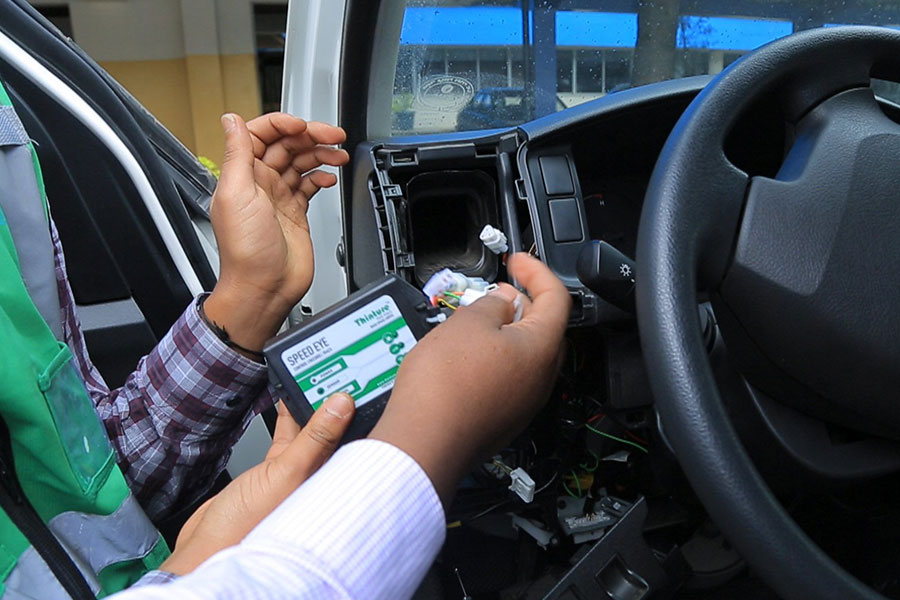
Fortune News | May 09,2020
Close to my neighbourhood, there is a wide street. A decade ago, with my friends, we used to joke that it was an expressway. Taken up largely by the Addis Abeba Light Rail now, the pedestrian walkways are ceaselessly thronged by people. Making things even more crowded is that it has become minibuses’ stopping spot.
This has become a severe bottleneck for motor traffic. Yet, no matter how frustrating it may look to the wheeled traffic, it does not apply to the pedestrians. The footway is jammed, among many others, by fruit vendors who buyers usually surround.
I have long struggled with accommodating the change and what it will mean for vehicle accidents. Car crashes used to be a significant headache, often getting a shoutout from Assefa Mezgebu, a radio personality, on morning radio reports, mostly with fatalities or major injuries.
After quite a while, I took that route for a walk. Just as I passed by the junction, the road started to look to have been dedicated only for pedestrians, as many spread out halfway to the main road. Yet, all of a sudden, the wheeled traffic started steaming out with its frustration, gushing outwards.
In the spur of the moment, two vehicles stood out, quite conspicuous, and dominated the vacuous left lane. A minibus sped towards a sedan clinging to the road’s left side; it looked more like a chase. Frightened, the small vehicle driver began to dither, unsure what to do. He finally settled on allowing the minibus to pass. It left one to ponder what would have happened had the sedan driver also had road rage.
Meanwhile, another road race continued between the minibus and a bus. The driver of the former wrestled once again with that car and finally won. Meanwhile, it shuffled the pedestrians to just one side of the road everywhere it passed.
The drama did not stop there. After a few strides as I was lost in thought, a nerve-racking ordeal started to unfold. A vehicle blared in a terrifying and alarming manner, the product of putting the car horn on a blast. I was so panicked that I was about to fall, as were the other people around me.
Yet, shockingly, inside the cabin, a small boy was obnoxiously playing with the car horn behind the wheel, accompanied by an adult man. The man was laughing as though he had never done before - he was all teeth. Dejected with this flagrant absence of decency, I reminisced about the history of the vehicle I read about some time ago. I was not the first one to have been freighted by these mechanical contraptions.
The two-wheeled predecessor of the bicycle used to be called velocipedes. Some even called them 'boneshakers' because of the machine’s vibrations on the terrible roads of the time. It used to scare horses on the road. Many towns and cities thus required bicycle riders to dismount when approaching one.
It is only sad that Ethiopia’s roads and streets are not that far removed from those days in North America and Europe. Usually, speeding and driving under the influence are blamed for high vehicle fatalities. While they have their own share of the blame, the design of our streets is also a major culprit.
Our road traffic system needs to cater to bicyclists and pedestrians as they have a right to mobility. Cars are not even the future. Escalating energy costs, overcrowded cities and heavy environmental impacts mean that the age of the car is nearing an end. We need to walk and pedal more if we want more sustainable and livable cities and neighbourhoods. At the very least, we need to design our streets better.
PUBLISHED ON
Jan 15,2022 [ VOL
22 , NO
1133]


Fortune News | May 09,2020

Radar | Jun 14,2020

Fortune News | Jun 11,2022

View From Arada | Jan 03,2021

Radar | Mar 11,2023

Viewpoints | Sep 10,2021

Radar | Aug 04,2024

Fortune News | Apr 02,2022

Fortune News | Sep 14,2019

Covid-19 | May 23,2020

Dec 22 , 2024 . By TIZITA SHEWAFERAW
Charged with transforming colossal state-owned enterprises into modern and competitiv...

Aug 18 , 2024 . By AKSAH ITALO
Although predictable Yonas Zerihun's job in the ride-hailing service is not immune to...

Jul 28 , 2024 . By TIZITA SHEWAFERAW
Unhabitual, perhaps too many, Samuel Gebreyohannes, 38, used to occasionally enjoy a couple of beers at breakfast. However, he recently swit...

Jul 13 , 2024 . By AKSAH ITALO
Investors who rely on tractors, trucks, and field vehicles for commuting, transporting commodities, and f...

Jul 5 , 2025
Six years ago, Ethiopia was the darling of international liberal commentators. A year...

Jun 28 , 2025
Meseret Damtie, the assertive auditor general, has never been shy about naming names...

Jun 21 , 2025
A well-worn adage says, “Budget is not destiny, but it is direction.” Examining t...

Jun 14 , 2025
Yet again, the Horn of Africa is bracing for trouble. A region already frayed by wars...